Mote teams up with Taiwanese aquariums and foundation to advance coral resilience effort
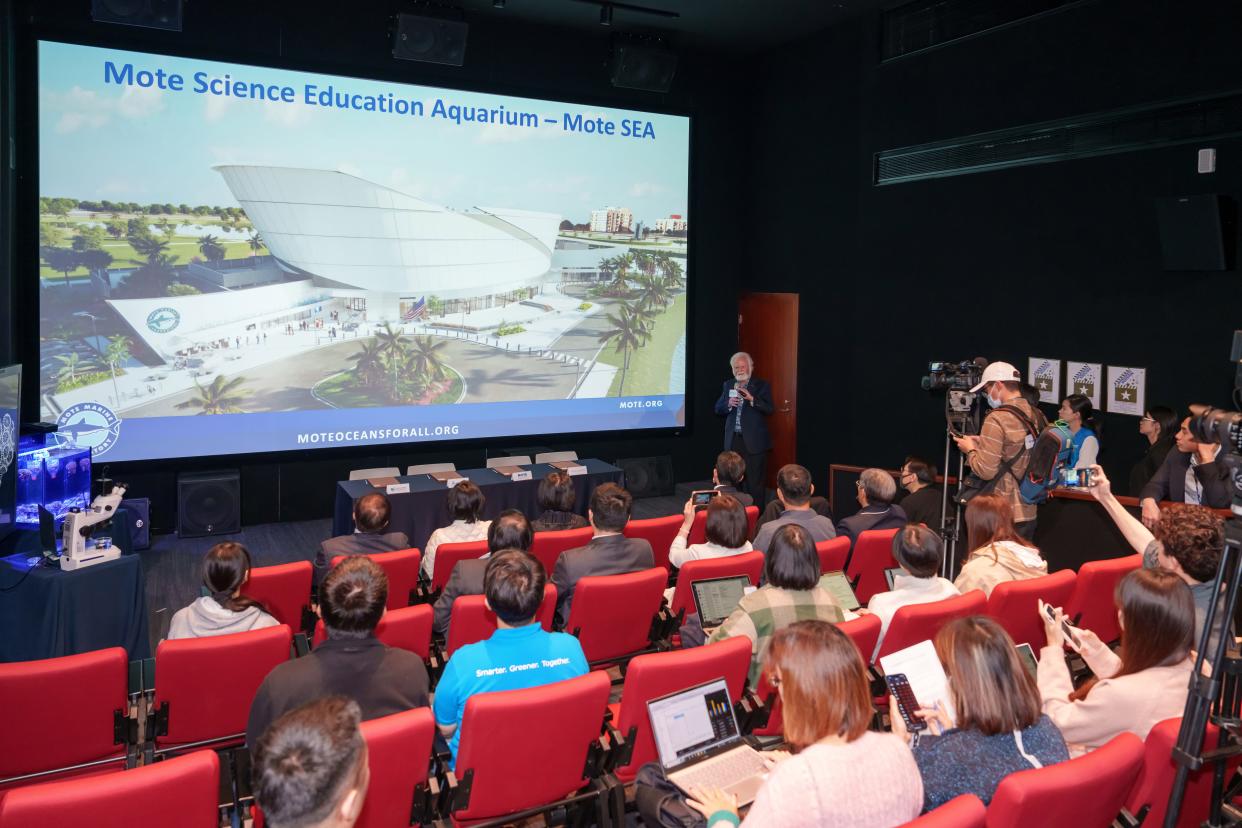
Mote Marine Laboratory & Aquarium will collaborate with two aquariums in Taiwan and the philanthropic foundation of a leading Taiwanese electronics manufacturer to advance research on heat-resilient coral and coral restoration, as well as expanding citizen scientists' impact on those efforts.
The partnership will proceed under an agreement Mote signed March 5 with representatives of Delta Environmental and Educational Foundation, Taiwan’s National Museum of Marine Biology and Aquarium (NMMBA) and the National Museum of Marine Science and Technology (NMMST).
The memo of understanding, signed while Mote President & CEO Michael Crosby was giving a presentation in Taiwan, is the first of its type between a major U.S. marine research and science education institution and counterparts in Taiwan. It will allow for exchange of technologies and cross training for scientists, with training manuals generated in both English and Mandarin.
Delta, a global provider of power and thermal management solutions, strives to address key environmental issues with innovative technology and has developed a coral restoration project with the two aquariums in Taiwan with a goal of restoring 10,000 corals over three years through continued efforts in propagation and breeding.
The memo makes Mote a critical partner in that effort.

The key piece of technology developed by Mote is its Climate and Acidification Ocean Simulator – CAOS system for short – used at Mote's Elizabeth Moore International Center for Coral Reef Research & Restoration on Summerland Key.
That system allows coral biologists to test the impact of climate change – including ocean acidification and warming temperatures – and helps them predict what types can thrive as conditions degrade.
Underwater heatwave proved resiliency efforts work
The agreement follows a record-breaking underwater heat wave that started in July 2023 and devastated much of the Florida Reef Tract.
In the aftermath, Mote biologists documented how genetically enhanced cross-bred elkhorn corals planted at the Mission: Iconic Reefs site and genetically enhanced cross-bred staghorn corals survived the near catastrophic warming event.
“It’s the genetic based resiliency approach that Mote really pioneered for coral restoration that is really the basis for this research collaboration,” Crosby said. ”That’s where we have advanced experience there and so we’ll be helping them begin that effort as well in Taiwan.”
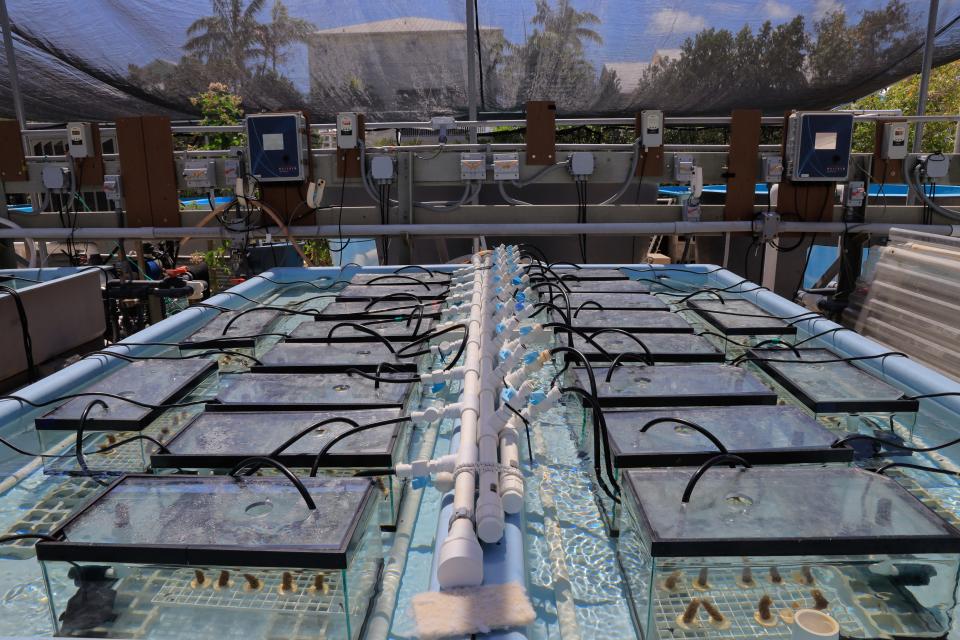
Mote biologists are still studying corals in the keys to expand their comprehensive asexual and sexual reproduction methods for producing genetically resilient coral, and share their findings with partners in Taiwan and around the world.
The Delta Environmental and Educational Foundation sent representatives to Mote last year to watch its coral bleaching rescue effort at work.
“We are honored to officially collaborate with Mote this year and will provide funding to support researchers at the NMMBA and the NMMST,” Shan-Shan Guo, executive director of the Delta Environmental and Educational Foundation said in a news release. “Additionally, we will send volunteers from Delta's coral restoration project to the United States for exchange and learning. We hope that by enhancing coral bleaching early warning and rescue mechanisms, we can better prepare for the next coral bleaching event in Taiwan."
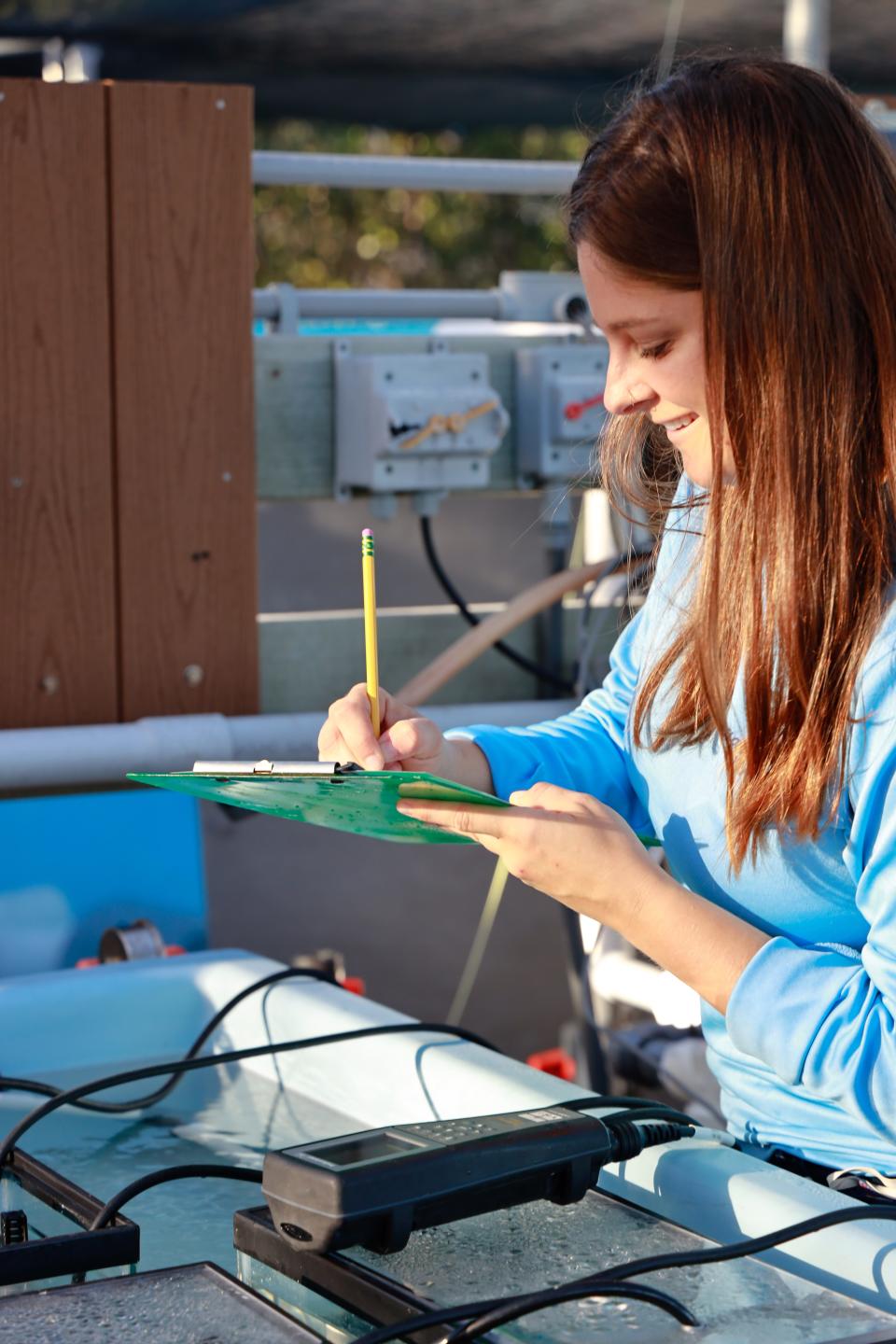
Crosby explained that some of the scenarios Mote scientists create with the CAOS system actually occur in the Western Pacific Ocean near Taiwan.
Taiwan is at the northern tip of one of the most highly diverse coral reef regions in the world, Crosby said. The thermal effluent of a power plant has heated the water in one portion of the reef tract, resulting in corals that have genetically adapted to the higher temperatures.
Meanwhile not far off the reef, the ocean gets deeper, with seasonal and tidal fluctuations producing deep water upwelling that can bring the corals in contact with significantly cooler water.
“So it’s a little bit of a microcosm for what we might be forecasting are possible temperatures in the coming decades,” Crosby said.
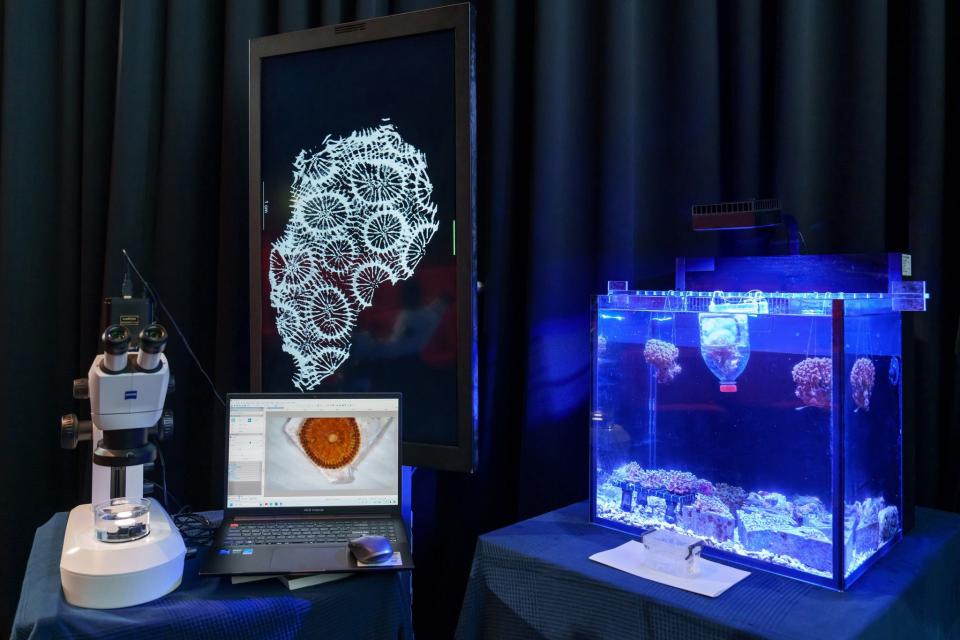
“We can do some very interesting compare and contrasts with what Mother Nature herself is doing with respect to the oceans,” he added.
Revolutionary technology
A workstation developed by Delta and showcased at Crosby’s presentation and the signing ceremony, allows biologists to study the skeleton of a living coral that otherwise would have to be killed and dissected.
Crosby explained that the microscope uses a sensor similar to that in a CAT scan that allows a scientist to look at the calcium carbonate skeleton where a coral polyp resides and measure the impact of ocean acidification. In the demonstration, the live coral sample was visible on a laptop screen while the lattice like skeleton was displayed on a larger monitor.
“This is a way to do it with a living coral sample and to follow that same individual polyp or colony of corals over the course of months, years and decades to follow the impacts of different ocean acidification levels – or Ph levels – and intersect that with questions of variability and temperature.”
An adjacent aquarium on that display demonstrated how brooding coral larvae can be captured in nursing and spawning tanks.
Marine science diplomacy
Expect to see those stations in a STEM workforce development lab and teaching labs on the first floor of Mote SEA – where volunteers and students will have a hands-on experience while learning about the ocean.
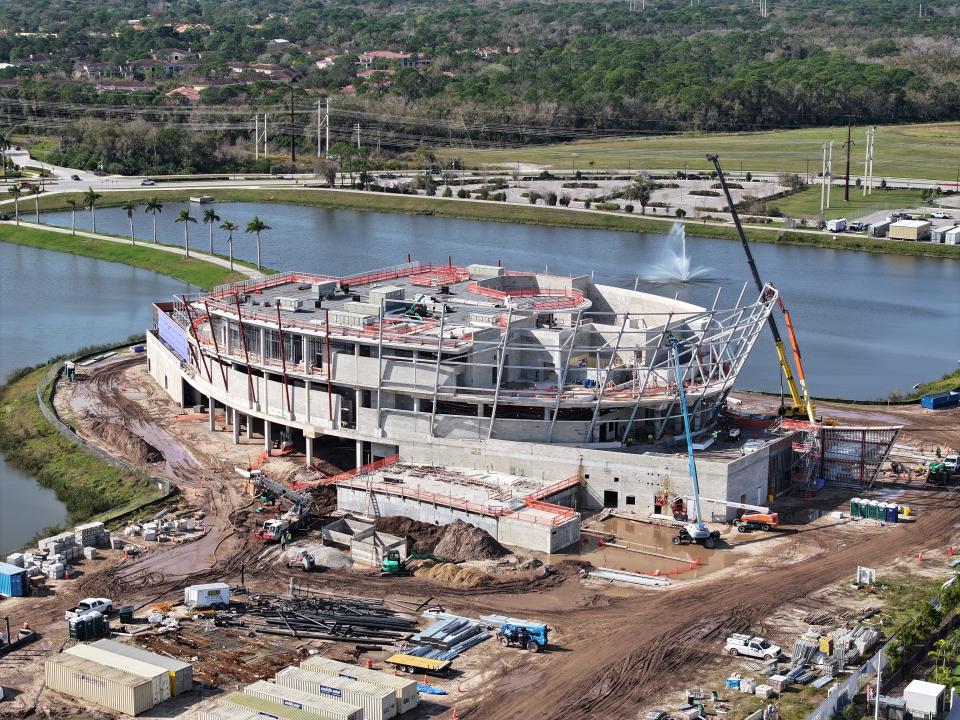
The partnership is the latest example of Mote's International Marine Science Diplomacy Initiative.
Mote is already working with Japan, Chile and Korea to expand its US Harmful Algal Bloom Control Technologies Incubator; its Global FinPrint project – a shark survey with 58 nations that prompted new international trade regulations – coral reef research in Mozambique and sharks and rays conservation work in Belize.
“Oceans and ocean resources really have no political boundaries other than to human beings who draw lines on a map,” Crosby said. “By working together we can share knowledge, exchange knowledge, learn from each other – not just the scientists but the entire communities and the next generation as well.”
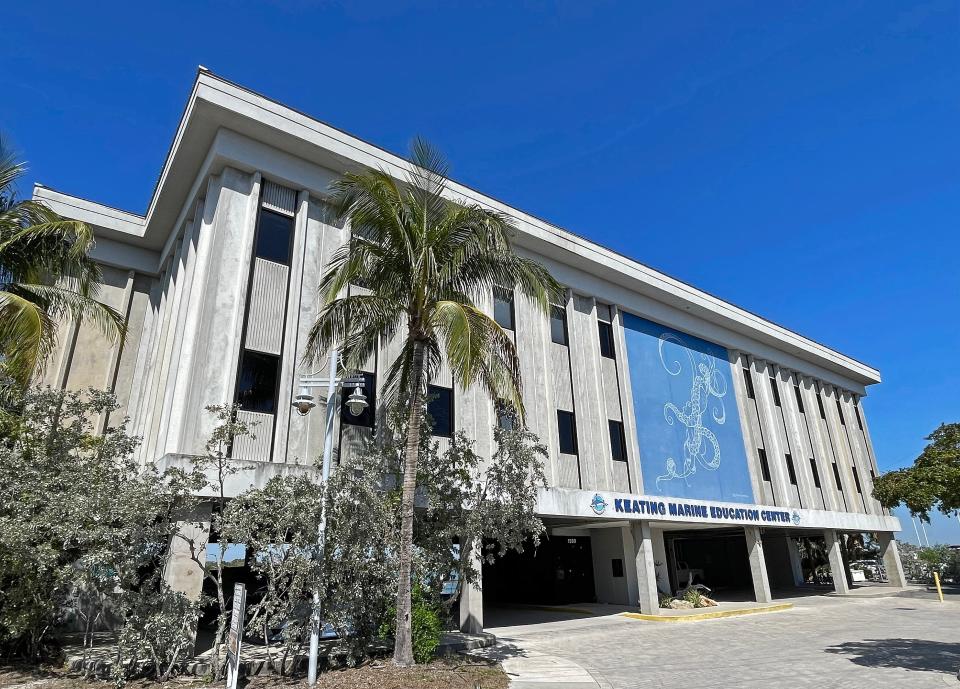
While some of that education may include virtual partnerships across time zones, much of it will be accomplished through exchanges, with U.S.-based citizen scientists and students traveling to the sister aquariums in Taiwan and Taiwanese students and citizen scientists coming to Sarasota.
“Mote SEA is just going to be incredible,” Crosby said. “Everything is about science in that it is not our grandparents' aquarium – it is unlike any other aquarium in any place in the world and it’s right here in our backyard.
“We’re going to really enhance the experiential opportunities of these high school students in all aspects of the research that we do,” Crosby said. “The impacts of this international marine science diplomacy initiative go beyond the innovative science and technology.”
Current progress calls for a soft opening of Mote SEA later this year and an official opening in early 2025.
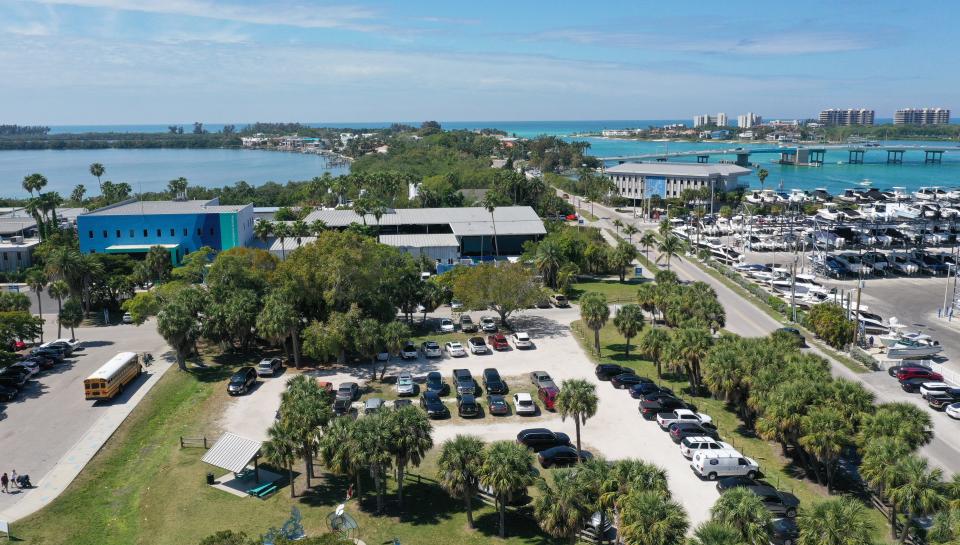
That opening will clear the way for expansion of research and hospital facilities on City Island.
Visions of an international research campus
Though not officially, Crosby has occasionally referred to the existing City Island site as the Mote International Marine Science and Technology Innovation Park.
Crosby declined to comment on a proposal by Ride Entertainment Sarasota to develop a portion of Ken Thompson Park through a public-private partnership but stressed that Mote is going to need all of its 10.5 acres there as the campus transforms.
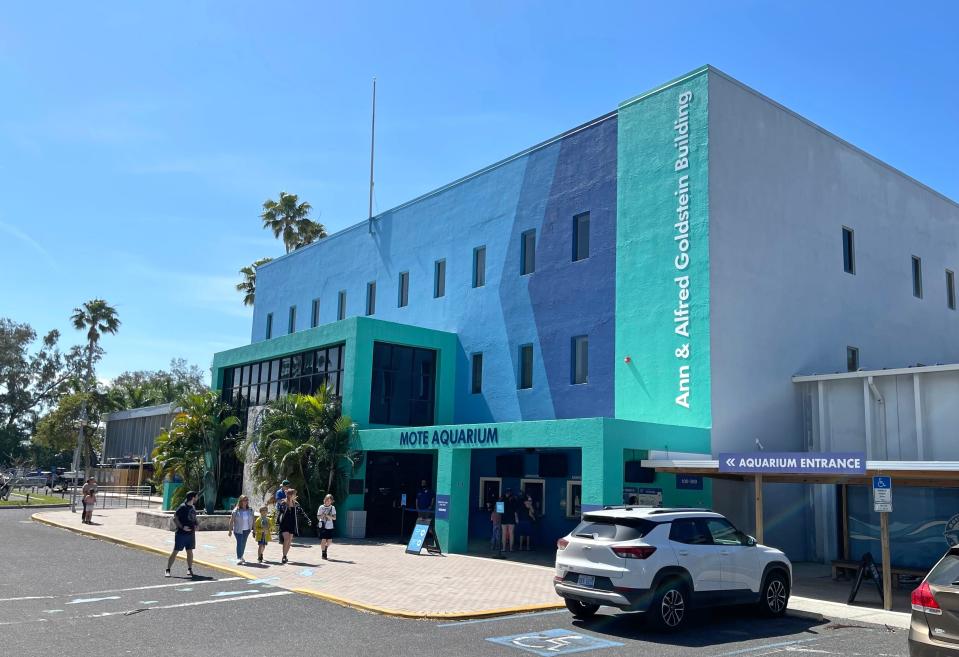
“We are going to be adding 60,000 square feet of research infrastructure to what we already have,” Crosby said. “We will have over 100,000 square feet of state-of the-art research infrastructure.”
In addition to research facilities, Crosby said Mote’s marine hospital and rescue and rehabilitation facilities will expand.
“There will be so much for people to see here that yes, there will be quite a few visitors,” Crosby said. “We ain’t going nowhere; we’re going to get bigger and better on City Island, once we give a rebirth to the Aquarium as the new Mote Science Education Aquarium.”
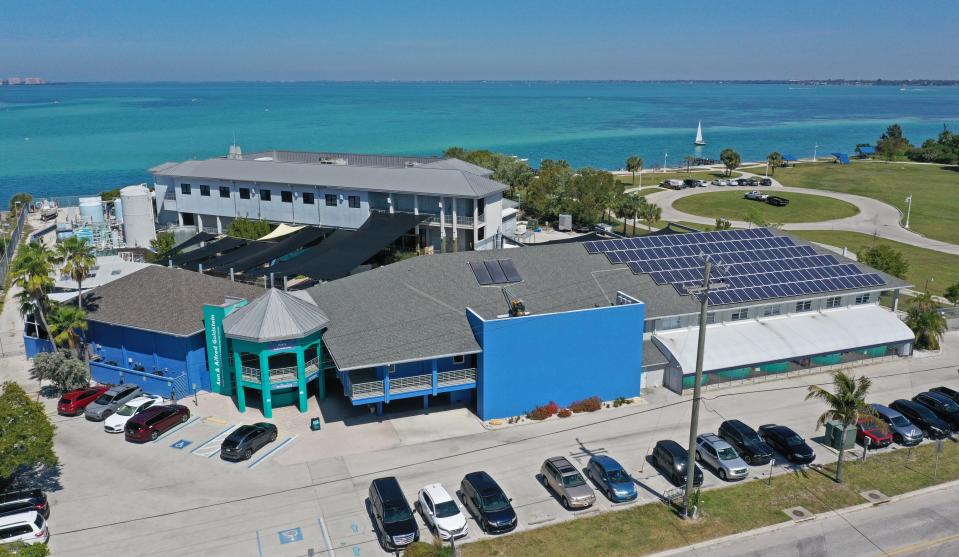
Mote’s long-term strategic plan calls for City Island to become a catalyst for what Crosby foresees as an opportunity for Southwest Florida to really become a Silicon Valley of marine science and technology.
“It’s going to attract scientists and engineers literally from all around the world to come here to Sarasota,” he said. “That intellectual property that comes out of all of this is going to be the foundation of growing new companies.
“Innovators and entrepreneurs can grow science and tech based businesses that can provide jobs for the next generation that are compatible with what we have as a culture here that is so intimately linked to our environment.”

This article originally appeared on Sarasota Herald-Tribune: Mote collaborates with Taiwanese aquariums on resilient coral research

